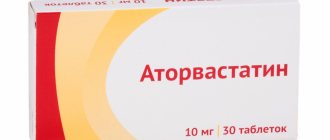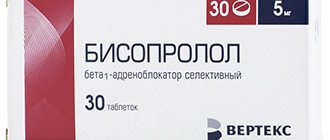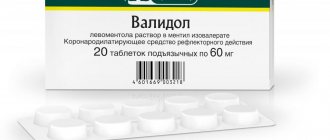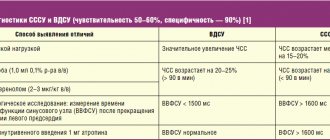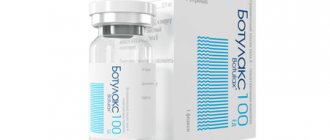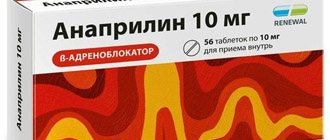Tranquilizers are a group of psychotropic drugs with an anti-anxiety effect, relieving anxiety and internal tension, anxiety, tremors and muscle tension of neurotic origin, and a feeling of fear. Some drugs in this group, in addition to their normalizing psycho-emotional state and nighttime sleep effect, can have a tonic effect.
Among tranquilizers (from the Latin tranquillo - to calm down) there are typical and atypical ones, which do not have pronounced non-core effects and do not cause dependence when taken for a long time. Based on their chemical structure, anxiolytics are divided into benzodiazepine derivatives (chlordiazepoxide, diazepam, phenazepam, oxazepam, medazepam, midazolam) and drugs of other chemical groups (meprotane, benactizine, phenibut, mebicar, benzoclidine).
The pharmacodynamic activity of all anxiolytics comes down to five main components: sedative, anti-anxiety, hypnotic, relaxant and anticonvulsant. Each specific drug has its own degree of severity of a particular therapeutic effect, which determines its clinical use (for example, in psychiatry, neurology, cardiology, gastroenterology, otolaryngology, anesthesiology).
Anxiolytics are prescribed to relieve states of agitation (1) and asthenia (2) accompanying various mental disorders:
- anxiety, panic, fear, irritability, dysphoria, problems with going to bed, decreased sleep duration, autonomic lability, autonomic crises;
- asthenia, chronic fatigue, hypochondria, problems with attention and remembering information, decreased intellectual activity, weakness, fatigue, lethargy, apathy, irritability, lack of vigor after sleep.
As a rule, the above conditions occur against the background of the following mental disorders:
- neuroses and neurosis-like conditions (F40–F48);
- behavioral disorders in children and adolescents (F91);
- personality disorders (F60–F69);
- fears and phobias (F40);
- insomnia (F51);
- panic attacks (F41);
- generalized anxiety disorder (F41.1);
- mixed anxiety and depressive disorder (F41.2);
- schizotypal disorder (F21);
- acute psychoses (F23, tranquilizers are prescribed as part of complex therapy);
- anorexia (F50.0–F50.1 and bulimia (F50.2);
- psychosomatic diseases (F04–07; F44.4–F44.7; F45; F50–F53).
In the practice of a neurologist, tranquilizers can be prescribed, for example, when states of agitation and asthenia occur due to traumatic brain injuries, strokes accompanied by increased muscle tone, epilepsy, and spinal osteochondrosis. Other somatic doctors prescribe anxiolytics for the treatment of functional disorders in the gastrointestinal tract (gastroenterologist), cardiovascular system (cardiologist), urinary system (gynecologist, urologist), withdrawal states and consequences of organic damage to the central nervous system (narcologist, toxicologist).
Mechanism of action of tranquilizers
The therapeutic mechanism of action of tranquilizers is the ability to influence the interneuronal transmission of nerve impulses in the diencephalon (intermediate) and spinal cord, reduce the activity of subcortical areas of the brain, reduce the level of dopamine and norepinephrine, as well as processes in the GABA systems of the brain, and block cholinergic receptors.
A feature of the therapeutic effect of tranquilizers is a calming effect on the central nervous system, excluding a pronounced antipsychotic effect. Therefore, they are widely used for mild (reversible) disorders of the central nervous system as an alternative to antipsychotic drugs.
The mechanism of action of tranquilizers depends on their chemical structure. Among anxiolytics, six classes of organic substances can be distinguished, represented by main chemical groups (according to the Anatomical Therapeutic Chemical Classification of Medicines, ATC):
- benzodiazepine derivatives;
- diphenylmethane derivatives;
- carbamates;
- dibenzo-bicyclo-octadiene derivatives;
- azaspirodecanedione derivatives;
- other anxiolytics.
The targets of anxiolytics are the following brain structures:
- limbic system of the hypothalamus;
- reticular formation of the brain stem,
- thalamic nuclei.
To date, the mechanism of action of tranquilizers of benzodiazepine derivatives has been well studied. Benzodiazepine receptors are involved in biochemical processes associated with GABAergic inhibition at all levels of the central nervous system. The versatile activity of tranquilizers is determined by their effect on various types of benzodiazepine receptors, thus allowing them to have anxiolytic, sedative, hypnotic, muscle relaxant and anticonvulsant effects.
Rice. 1. The mechanism of action of tranquilizers.
Anxiolytic (anti-anxiety) effect
The main task of tranquilizers is to provide an anxiolytic (anti-anxiety) effect: relieve anxiety, anxiety, fear (antiphobic effect), reduce emotional stress. In addition, anxiolytics help to cope with obsessive thoughts and hypochondria, irrational worries about one’s own health.
Tranquilizers are not antipsychotic drugs, so they do not relieve hallucinations, delusions, affective and productive disorders. Their therapeutic effect is aimed at other structures in the nervous system that are not responsible for the occurrence of such symptoms.
Sedative (calming) effect
Anxiolytics have a sedative (calming) effect, which is expressed in a decrease in hyperactivity, psychomotor excitability, speed of motor and mental reactions, and concentration. The sedative effect can be considered complementary to the anxiolytic.
Hypnotic effect
In case of sleep disorders (difficulties in falling asleep, in the presence of superficial sleep, sensitive to external stimuli, as well as short sleep, insufficient for restoration of strength), which, as a rule, arise against the background of mild and borderline mental disorders, tranquilizers help to cope with these conditions through a hypnotic (hypnotic) effect.
Muscle relaxant (relaxing) effect
In psychopathological conditions that cause tension in the skeletal muscles, muscle and motor excitation, the muscle relaxant (relaxing) effect of anxiolytics is useful. However, if the patient’s professional activity or lifestyle is associated with the need to maintain a rapid mental and physical reaction, strict selection of the drug in the correct dosage is necessary. Otherwise, a subjective feeling of lethargy and weakness may appear.
Anticonvulsant effect
The anticonvulsant effect of tranquilizers is usually used for conditions accompanied by epileptogenic activity. In particular, this effect finds therapeutic use in hysteroepilepsia (non-epileptic paroxysmal conditions), non-convulsive epilepsy, neuropsychogenic seizures (for example, breath holding, parasomnia, panic disorder, cardiogenic seizures, tension headaches).
Vegetative stabilizing effect
The therapeutic action profile of some tranquilizers includes a vegetative stabilizing effect - stabilizing the functional activity of the autonomic nervous system. When taking such drugs, autonomic manifestations of anxiety are stopped, for example: rapid heartbeat, high blood pressure, sweating, gastrointestinal disorders.
Rice. 2. The principle of prescribing tranquilizers.
Side effects and contraindications
Despite the fact that some tranquilizers are sold in pharmacies without a prescription, their use must be regulated (both in dosage and course duration). Uncontrolled use inevitably causes side effects, including:
- daytime sleepiness;
- general lethargy, lack of tone;
- muscle weakness;
- poor concentration;
- memory impairment;
- decreased performance;
- slowness of mental reactions;
- anxiety;
- insomnia;
- psychomotor agitation;
- paradoxical reactions;
- urinary retention;
- decreased sexual desire;
- nausea, vomiting;
- constipation;
- hypotension (low blood pressure).
In addition, it is worth considering that there are a number of contraindications to taking tranquilizers, including:
- pregnancy (especially the first trimester);
- lactation period;
- psychoses;
- myasthenia gravis;
- eye diseases;
- renal failure;
- liver damage;
- individual intolerance to individual components;
- children, teenagers and old age.
A more complete list of contraindications can be found in the instructions for the specific drug. Often it consists of 1-2 dozen different positions. Therefore, before using even an over-the-counter product, you should consult your doctor.
Side effects of tranquilizers
Tranquilizers confidently entered minor and borderline psychiatry in the second half of the 20th century as first-choice drugs, displacing antipsychotics and antidepressants, due to the lack of pronounced side effects and good tolerability. The search for new drugs in this group has been going on since 1959, after the first tranquilizer, chlordiazepoxide (Elenium), proved itself to be the best in clinical practice. It is worth noting that today there are more than 50 types of benzodiazepine tranquilizers alone, which have an improved action profile and tolerability.
Abuse and non-medical use
The main side effects of tranquilizers that occur due to abuse or non-medical use of drugs in this group include:
- hypersedation - drowsiness, decreased concentration, memory problems;
- hypermyorelaxation - lethargy, muscle weakness;
- behavioral toxicity - impairment of cognitive functions and psychomotor skills;
- paradoxical reactions - agitation, aggressiveness, sleep disturbances;
- Dependence - mental and physical dependence with manifestations of neurotic anxiety.
Drug intoxication
The effects of abuse and non-medical use of tranquilizers are somewhat similar to barbiturate addiction. The consequences of intoxication depend on the drug taken, however, the severity of the side effects of tranquilizers is small and does not reach serious intellectual, mental and affective disorders. Such drug intoxication can be expressed in a variety of conditions:
- analogue of alcohol intoxication;
- severe lethargy;
- decreased reaction speed;
- drowsiness;
- excessive muscle relaxation;
- increased physical activity;
- euphoria.
The side effects of tranquilizers when used over a long distance are reflected in the appearance and behavior of a person, obvious to others. In such a person, coordination of movements is impaired, the gait becomes sluggish and staggering; speech is unintelligible and confused, but animated; the condition of the skin worsens - it becomes pale; pupils are dilated and react sluggishly to light; the oral cavity is dry, the tongue is covered with a white coating.
Non-medical use of tranquilizers leads to addiction. It is expressed in a change in the nature of intoxication, increasing the dosage of the drug taken in order to achieve the same effect (euphoria). However, euphoria and disinhibition are replaced by irritability and aggression. Ultimately, acute intoxication with tranquilizers leads to the development of a psychotic state - hallucinations, disorders of consciousness, psychomotor agitation. An overdose can lead to coma.
From the somatoneurological side, side effects of tranquilizers can be expressed by the following conditions:
- photophobia;
- hyperhidrosis;
- tachycardia (pulse rate reaches 100 beats per minute);
- hypotension;
- hyperthermia;
- dizziness;
- nausea, vomiting;
- blurred vision;
- tinnitus;
- headaches;
- tactile hypersensitivity;
- olfactory hypersensitivity;
- attacks of fever and chills;
- convulsive seizures.
Treatment for tranquilizer dependence includes drug withdrawal and psychosocial rehabilitation. As a rule, abrupt cessation of taking tranquilizers can cause withdrawal symptoms, accompanied by epileptic seizures, therefore, during treatment, it is necessary to replace it with another (weak) tranquilizer in order to gradually reduce the dosage.
Psychopathology associated with long-term non-medical use of tranquilizers varies from mild anxiety-phobic states to a state of depersonalization-derealization. In addition, in the process of addiction treatment there is a high likelihood of increased low mood, hypochondriacal conditions, lack of initiative and sleep disturbances, which can lead to depression. Having an impact on the quality of life in general, such a person necessarily needs long-term work with a psychotherapist, including in the area of resocialization.
Indications for the use of tranquilizers
Indications for use are related to disorders of the nervous system, including:
- excessive stress, anxiety;
- constant anxiety;
- panic attacks;
- vestibular paroxysms;
- fear for no apparent reason;
- anxiety-depressive, affective-delusional states;
- sleep problems;
- withdrawal disorders due to alcoholism, substance abuse;
- stomach ulcer, duodenal ulcer;
- cardiovascular diseases;
- as an anesthetic (in combination with other substances as prescribed by a doctor).
Most tranquilizer drugs are available only with a prescription. But there are also over-the-counter remedies, for example, based on benzodiazepine.
List of tranquilizer drugs
In the international Anatomical Therapeutic Chemical Classification (ATC), adopted by the Ministry of Health of the Russian Federation in 2002, anxiolytics (N05B) are included in the subsection of the section Drugs for the treatment of diseases of the nervous system (N) - Psycholeptics (N05). This subsection includes six groups of tranquilizers:
- benzodiazepine derivatives (N05BA): Chlordiazepoxide, Medazepam, Oxazepam, Potassium clorazepate, Lorazepam, Adinazolam, Bromazepam, Clobazam, Ketazolam, Prazepam, Alprazolam, Galazepam, Pinazepam, Camazepam. Nordazepam, Fludiazepam, Ethyl loflazepate, Etizolam, Clotiazepam, Cloxazolam, Tofisopam, Lorazepam in combination with other drugs;
- diphenylmethane derivatives (N05BB): Hydroxyzine, Captodiam, Hydroxyzine in combination with other drugs;
- carbamates (N05BC): Meprobamate, Emilkamate, Mebutamate, Meprobamate in combination with other drugs;
- dibenzo-bicyclo-octadiene derivatives (N05BD): Benzoctamine;
- Azaspirodecanedione derivatives (N05BE): Buspirone;
- other anxiolytics (N05BX): Mefenoxalone, Gedocarnil, Etifoxine, Fabomotizol.
Below we present two lists of tranquilizers that can be prescribed for neuroses and neurosis-like mental disorders based on elements of the leading symptoms.
Rice. 1. Formula of the first tranquilizer.
Target - elements of agitation
Mild and borderline mental disorders may be accompanied by elements of agitation: anxiety, panic, fear, overvalued thoughts of fear, obsessive fears, irritability, dysphoria, difficulty going to bed, decreased sleep duration, vegetative lability, vegetative crises. Elements of agitation are the target of the following tranquilizers:
- Diazepam;
- Alprolasam;
- Phenazepam;
- Lorazepam;
- Clonazepam;
- Flurazepam;
- Medazepam;
- Oxazepam;
- Triazolam;
- Bratizolam;
- Tetrazepam;
- Clobazam;
- Gidazepam;
- Nitrazepam;
- Flunitrazepam.
Target - elements of asthenia
Elements of agitation in reversible mental disorders include: mental and physical asthenia, chronic fatigue syndrome, hypochondria, impaired attention and memory, decreased intellectual activity, weakness, fatigue, lethargy, apathy, exhaustion, irritable weakness, autonomic lability, lack of vigor after sleep, anxiety . If such symptoms are present, the following tranquilizers are effective:
- Adaptol;
- Noofen;
- Trioxazine;
- Tofisopam;
- Buspirone.
The choice of a particular tranquilizer depends on the therapeutic goals, the nature of the disease and the individual characteristics of the patient’s health condition. The same applies to the dosage and timing of taking drugs in this group. Refusal of the doctor’s recommendations for taking an anxiolytic (frequency of dosage, recommended dosage, timing of treatment) is unacceptable.
Side effects and complications during treatment with psychotropic drugs
Side effects during psychopharmacotherapy, as with the use of many other drugs, are associated with the inability to selectively influence exclusively pathologically altered brain systems. Some of them are directly related to the therapeutic effect of drugs and occur in the majority of patients taking this drug. An example is neuroleptic syndrome when using first-generation antipsychotics. Other side effects and complications, which usually occur rarely, are due to the patient’s individual reactions to a particular drug. This section will discuss only the most typical side effects and complications associated with the use of psychopharmacological drugs of various classes.
Neuroleptics.
The main side effects of treatment with neuroleptics are
neuroleptic syndrome.
The leading clinical manifestations of this syndrome are considered to be extrapyramidal disorders with a predominance of either hypo- or hyperkinetic disorders.
Hypokinetic disorders include drug-induced parkinsonism, manifested by increased muscle tone, trismus, rigidity, stiffness and slowness of movements and speech. Hyperkinetic disorders include tremor, hyperkinesis (choreiform, athetoid, etc.). Typically, the clinical picture contains both hypo- and hyperkinetic disorders in one or another ratio. The phenomena of dyskinesia can be paroxysmal in nature. Most often they are localized in the mouth area and are manifested by spasmodic contractions of the muscles of the pharynx, tongue, lips, jaws, but often spread to other muscle groups (oculogyric crises, torticollis, torsion spasm, excitomotor crises). Along with extrapyramidal disorders, the phenomena of akathisia can be observed - a feeling of restlessness, “restlessness in the legs”, combined with tasykinesia (the need to move, change position). In severe cases, akathisia is accompanied by anxiety, agitation, and sleep disorders. A special group of dyskinesia includes tardive dyskinesia
, which is expressed in involuntary movements of the lips, tongue, face, and less commonly, choreiform movements of the limbs. The very name “tardive dyskinesia” suggests that it occurs after long-term treatment with antipsychotics (on average after 2 years). In these cases, there is no correlation with the type of drug, doses and characteristics of treatment at earlier stages, including with previous extrapyramidal disorders.
Among the disorders of the autonomic nervous system, the most commonly observed are orthostatic hypotension (it is not recommended to relieve it with adrenaline), sweating, weight gain, changes in appetite, constipation, and diarrhea. Sometimes anticholinergic effects are observed - visual disturbances, dysuric phenomena. Possible functional disorders of the cardiovascular system with changes on the ECG in the form of an increase in the Q - T ,
reduction of the Gili wave, its inversion, tachycardia or bradycardia. Sometimes side effects occur in the form of photosensitivity, dermatitis, skin pigmentation; Allergic skin reactions are possible. Side effects associated with an increase in prolactin in the blood manifest themselves in the form of dysmenorrhea or oligomenorrhea, pseudohermaphroditism in women, gynecomastia and delayed ejaculation in men, decreased libido, galactorrhea, and hirsutism. In rare cases, changes in blood sugar levels, as well as symptoms of diabetes insipidus, are observed.
Severe complications of neuroleptic therapy include general allergic and toxic reactions, hepatitis, pathological changes in the organ of vision (pathological pigmentation of refractive media, combined with pathological pigmentation of the skin of the hands and face - “cutaneous-eye syndrome”, toxic changes in the retina), blood picture disorders (leukopenia , agranulocytosis, aplastic anemia, thrombocytopenia). Among the mental disorders associated with therapy are anesthetic depression, a painful disturbance of the sense of sleep, delirium (more often it occurs with a sharp change in the doses of antipsychotics in people with organic diseases of the central nervous system, the elderly or children), epileptiform seizures.
New generation neuroleptics, compared to traditional derivatives of phenothiazines and butyrophenones, cause significantly fewer side effects and complications.
Antidepressants.
Side effects related to the central nervous system and the autonomic nervous system include dizziness, tremor, dysarthria, impaired consciousness in the form of delirium, and epileptiform seizures. Possible exacerbation of anxious disorders, activation of suicidal tendencies, inversion of affect, drowsiness or, on the contrary, insomnia. Side effects may include hypotension, sinus tachycardia, arrhythmia, and atrioventricular conduction disturbances. Complications from the hematopoietic system are relatively rare. Their clinical signs are suppression of bone marrow function, leukopenia, agranulocytosis, thrombocytopenia, hemolytic anemia. Dysfunction of the endocrine system is limited by changes in blood sugar levels (a downward trend).
When treated with antidepressants, side effects such as dry mucous membranes, impaired accommodation, increased intraocular pressure, hypo- or intestinal atony (constipation), and urinary retention also occur. They are more often observed when taking traditional tricyclic antidepressants and are associated with their anticholinergic effect. The use of tricyclic drugs is often accompanied by an increase in appetite and a significant increase in body weight. When MAO inhibitors are used simultaneously with foods containing tyramine or its precursor tyrosine (cheeses, etc.), a “cheese effect” occurs, manifested by hypertension, hyperthermia, convulsions and sometimes leading to death.
New generations of antidepressants are better tolerated and safer. It can only be noted that when prescribing serotonin reuptake inhibitors and reversible MAO-A inhibitors, disturbances in the functioning of the gastrointestinal tract (nausea, vomiting, diarrhea), headaches, insomnia, and anxiety are observed. The development of impotence while taking serotonin reuptake inhibitors has also been described. In cases of combination of serotonin reuptake inhibitors with drugs of the tricyclic group, the formation of the so-called serotonin syndrome is possible.
manifested by increased body temperature and signs of intoxication. Daytime drowsiness and lethargy are more typical for tetracyclic antidepressants.
Tranquilizers.
Side effects during treatment with tranquilizers most often include daytime drowsiness, lethargy,
muscle weakness, impaired concentration, short-term memory, as well as a slowdown in the speed of mental reactions. In some cases, paradoxical reactions develop in the form of anxiety, insomnia, psychomotor agitation, and hallucinations. Ataxia, dysarthria, and tremor occur much less frequently.
Among the dysfunctions of the autonomic nervous system and other organs and systems, hypotension, constipation, nausea, urinary retention or incontinence, and decreased libido are noted. Signs of depression of the respiratory center may also appear (respiration may stop). Changes in the functions of the visual organs manifest themselves in the form of diplopia and impaired accommodation. Long-term use of tranquilizers is dangerous due to the possibility of developing addiction to them, i.e. mental and physical dependence.
Nootropics.
Side effects during treatment with nootropics are rare. Sometimes nervousness, irritability, elements of psychomotor agitation and disinhibition of drives, as well as anxiety and insomnia appear. Possible dizziness, headache, tremor; in some cases, dyspeptic symptoms - nausea, abdominal pain.
Stimulants.
These drugs have side effects on the central nervous system (tremor, euphoria, insomnia, irritability, headaches, and signs of psychomotor agitation). Disturbances of the autonomic nervous system may be observed - sweating, dry mucous membranes, anorexia, as well as cardiovascular disorders - arrhythmia, tachycardia, increased blood pressure. When treating patients with diabetes, it should be borne in mind that while taking stimulants, the body's sensitivity to insulin may change. Sexual dysfunction is also possible.
It is important to emphasize that long-term and frequent use of stimulants can lead to the development of mental and physical dependence.
Lithium salts.
Side effects or complications when using lithium salts usually occur at the beginning of therapy before a stable concentration of the drug in the blood is established. When therapy is carried out correctly under the control of lithium levels in the blood and the patient is fully informed about the treatment features, side effects rarely interfere with the preventive course. The patient should first of all know about the features of the diet - excluding high intake of liquid and salt, limiting foods rich in lithium - smoked meats, some types of hard cheeses, red wine.
The most common side effect that occurs with lithium therapy is tremor. Severe tremor, indicating the neurotoxic effect of lithium, increases with high concentrations of lithium in plasma. Often there are dysfunctions of the gastrointestinal tract - nausea, vomiting, loss of appetite, diarrhea. Weight gain, polydipsia, and polyuria are often observed. Lithium inhibits thyroid function, causing hypothyroidism. Usually these phenomena are transient. In severe cases, discontinuation of therapy is indicated. The effects of lithium on the cardiovascular system are similar to those of hypokalemia, but, as a rule, no special intervention is required. Acne, maculopapular rash, and worsening of psoriasis are possible. Cases of alopecia have been reported. With long-term lithium therapy, disturbances in the cognitive sphere may be observed: memory loss, slowing of psychomotor reactions, dysphoria. Signs of severe toxic conditions and drug overdose: metallic taste in the mouth, thirst, severe tremor, dysarthria, ataxia, and with further increase in intoxication - impaired consciousness, fascicular muscle twitching, myoclonus, convulsions, coma. The longer the toxic level of lithium in the blood persists, the greater the likelihood of irreversible changes in the central nervous system, and in especially severe cases, death.
Lithium therapy is contraindicated in patients with impaired renal excretory function, cardiovascular diseases (in the stage of decompensation), chronic diseases of the gastrointestinal tract (gastric and duodenal ulcers, etc.), epilepsy, in conditions requiring a salt-free diet, during pregnancy, old age. A relative contraindication to the use of lithium drugs is dysfunction of the thyroid gland.
Anticonvulsants.
The most common side effects that occur during treatment with anticonvulsants, in particular carbamazepine, are functional disorders of the central nervous system - lethargy, drowsiness, dizziness, ataxia. Hyperreflexia, myoclonus, and tremor can be observed much less frequently. The severity of these phenomena decreases significantly with a gradual increase in doses. They usually disappear during therapy. Sometimes side effects such as nausea, vomiting, constipation or diarrhea, and decreased appetite are observed; possible development of hepatitis. Severe and rare (1 case in 20,000) complications of carbamazepine therapy include suppression of white blood cells. This drug should be used with caution in patients with cardiovascular pathology (it can reduce intracardiac conduction), glaucoma, prostate adenoma and diabetes. In case of an overdose of carbamazepine, symptoms of drowsiness occur, which can progress to stupor and coma; sometimes there are convulsions and dyskinesia of the facial muscles, functional disorders of the autonomic nervous system - hypothermia, depression of the respiratory and vasomotor centers (sinus tachycardia, arterial hypo- and hypertension). With pronounced cardiotoxic effects of carbamazepine, atrioventricular block may develop.
General principles of treatment for side effects and complications of psychopharmacotherapy
With pronounced side effects, the question inevitably arises about the relationship between the positive and negative effects of a particular drug and the advisability of continuing therapy. If the effectiveness of the drug clearly exceeds its undesirable effect, then to improve its tolerability in some cases it is enough to temporarily reduce the dose and then slowly increase it to the therapeutic dose. Sometimes it is advisable to change the regimen and rhythm of taking the drug with redistribution of the daily dose throughout the day.
Often, additional therapeutic agents are required to relieve side effects.
Special therapy is usually carried out in the presence of side effects caused by the use of antipsychotics. To correct the extrapyramidal disorders most characteristic of neuroleptic therapy, anticholinergic drugs are used - trihexyphenidyl (Artane, Cyclodol, Parkopan), bentropine (Cogentin, Tremblex), biperidine (Akineton). Correctors of different pharmacological groups have different characteristics of action, therefore, if the effectiveness of drugs from one group is low, drugs from another group should be prescribed or the form of administration should be changed (oral to parenteral). It must be remembered that corrective therapy should be started after the first signs of side effects occur, but not prophylactically.
In some patients, the desired effectiveness of therapy is achieved by combining anticholinergics with tranquilizers with a pronounced muscle relaxant effect (diazepam, lorazepam). A combination of anticholinergics, tranquilizers and β-blockers (propranolol) is indicated in the treatment of akathisia.
Special treatment tactics are used for tardive dyskinesia. According to modern concepts, the biological basis of these conditions is an increase in sensitivity and an increase in the density of dopaminergic receptors in the striatum due to their prolonged blockade by neuroleptics. Based on this, it is recommended to reduce the doses of antipsychotics. If the symptoms of tardive dyskinesia increase, then antipsychotics should be discontinued. In these cases, a positive effect is sometimes achieved by prescribing GABA agonists (baclofen, aminalon, picamilon), cholinergic receptor agonists (tacrine, cogitum), and B vitamins. Some features are observed only when orthostatic hypotension is relieved. For this purpose, it is recommended to use α-adrenergic receptor stimulants, for example mezaton.
The tremor that appears at high concentrations of lithium in the blood is stopped by reducing the daily dose of the drug. You can use fractional divisions of the daily dose, as well as additionally prescribe antipsychotics. If gastrointestinal disorders occur, lithium tolerability can be improved by reducing doses, split doses of the drug, or taking it immediately after meals. These disorders, as well as weight gain and polydipsia, can also be corrected by prescribing long-acting forms of lithium preparations, which make it possible to smooth out sharp fluctuations in the concentration of the drug in the blood (the latter, according to existing ideas, cause the occurrence of side effects). In case of severe dysfunction of the thyroid gland, lithium therapy is stopped and hormonal drugs are prescribed. In case of severe intoxication, lithium preparations should be immediately discontinued and dehydration should be combated; in severe cases, hemodialysis is indicated.
Complications during treatment with carbamazepine can also be stopped by reducing doses and preventing their development by gradually increasing the dose. In more severe cases, with an overdose of carbamazepine, you should immediately rinse the stomach, prescribe activated charcoal, and then carry out intensive general medical detoxification measures.
Thus, a large group of side effects of psychotropic drugs does not require special therapy, since their severity decreases when therapy is continued at the same doses or when doses are reduced. This applies, in particular, to sedation and orthostatic disorders. If side effects are significant and it is impossible to cancel therapy or transfer the patient to other drugs, appropriate symptomatic medications are prescribed and treatment is continued under constant medical supervision with monitoring of laboratory parameters.
List of used literature
1. Usov L.A., Sufianova G.Z., Minakina L.N. "Pharmacology of the central nervous system."
2. Samarenko V.Ya. "Chemical technology of medicinal substances."
3. Bakumov P.A., Evseev A.V. "The use of tranquilizers in therapeutic practice."
4. Murashko N.K. "Psychopharmacotherapy of cardioneurological patients."
5. Serov V.N., Baranov I.I. "Tranquilizers in obstetric and gynecological practice."
6. Verbenko V.A., Verbenko N.V. "Psychotropic drugs in therapeutic practice."
7. Malin D.I. "Critical illness therapy in psychiatry"
8. Drobizhev M.Yu., Ovchinnikov A.A. "Pathogenetic psychopharmacotherapy of anxiety disorders."
9. Ivashchenko D.V. "Safety of the use of tranquilizers from the group of benzodiazepines in alcohol withdrawal syndrome: pharmacoepidemiology and pharmacogenetics."
Share
Share
Cost of treatment in our clinic
| Service | Price | |
| Ambulatory treatment | ||
| Psychiatrist consultation | 4 500 ₽ | |
| Consultation with a psychotherapist | 4 500 ₽ | |
| Psychodiagnostics extended | 7 000 ₽ | |
| Consultation with a psychiatrist at home | 6 000 ₽ | |
| Treatment in hospital | ||
| Delivery to hospital | For free | |
| Standard room | 7 700 ₽ | |
| 3-bed superior room | 10 600 ₽ | |
| 2-bed superior room | 13 700 ₽ | |
| 1 local VIP chamber | 19 000 ₽ | |
| Doctor's appointment 2 weeks after discharge | For free | |

